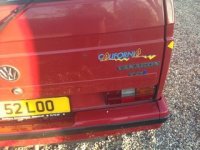1988 October: VW presents its first campervan on the Essen Caravan Salon. That’s how VW puts it in the booklet
40 Jahre VW Transporter (1). So we may say that the California was a regular VW from the start, while the Joker remained an authorized conversion. In its press statement at the introduction of the California (2), VW said that it would be considerably cheaper than the comparable Westfalia model. Another important advantage for the customer, VW claimed, was that car and conversion could now be ordered together and were both guaranteed by VW.
So much is clear. However, I wonder how this worked out during the next 15 years of VW-Westfalia cooperation. There is often little attention for the commercial aspects of car history, therefore much remains in the dark. For the short term, some (3) think that the rather basic California was no competition for Westfalia’s Club/Joker. I also observed that at the time of the introduction VW referred to the California as a special model (
Sondermodell), suggesting that the availability would be temporary. But the upgrade Atlantic, introduced a year later, was certainly a threat to the Westfalia models still in production (vwpix.org has several Westfalia price lists for model year 1990).
Finally, the Vanagon. The German Wikipedia (4), after presenting the California as VW’s first own camper van, adds:
VW had already successfully tried this policy on the US market for some years ... the relationship (of the California) with the Vanagon Camper was also made clear by the use of the label Vanagon on the backside of the California. If that’s correct, the Vanagon would also, like the California, be more VW than Westfalia. And, to return to the original question, it might well belong here. Even air-cooled!
(1)
http://www.vwpix.org/eng/ - archive/VW bus T3/Pressemappen
(2) the same
(3)
http://www.spiegel.de/auto/aktuell/20-j ... 74992.html
(4)
http://de.wikipedia.org/wiki/California ... semobil%29
















